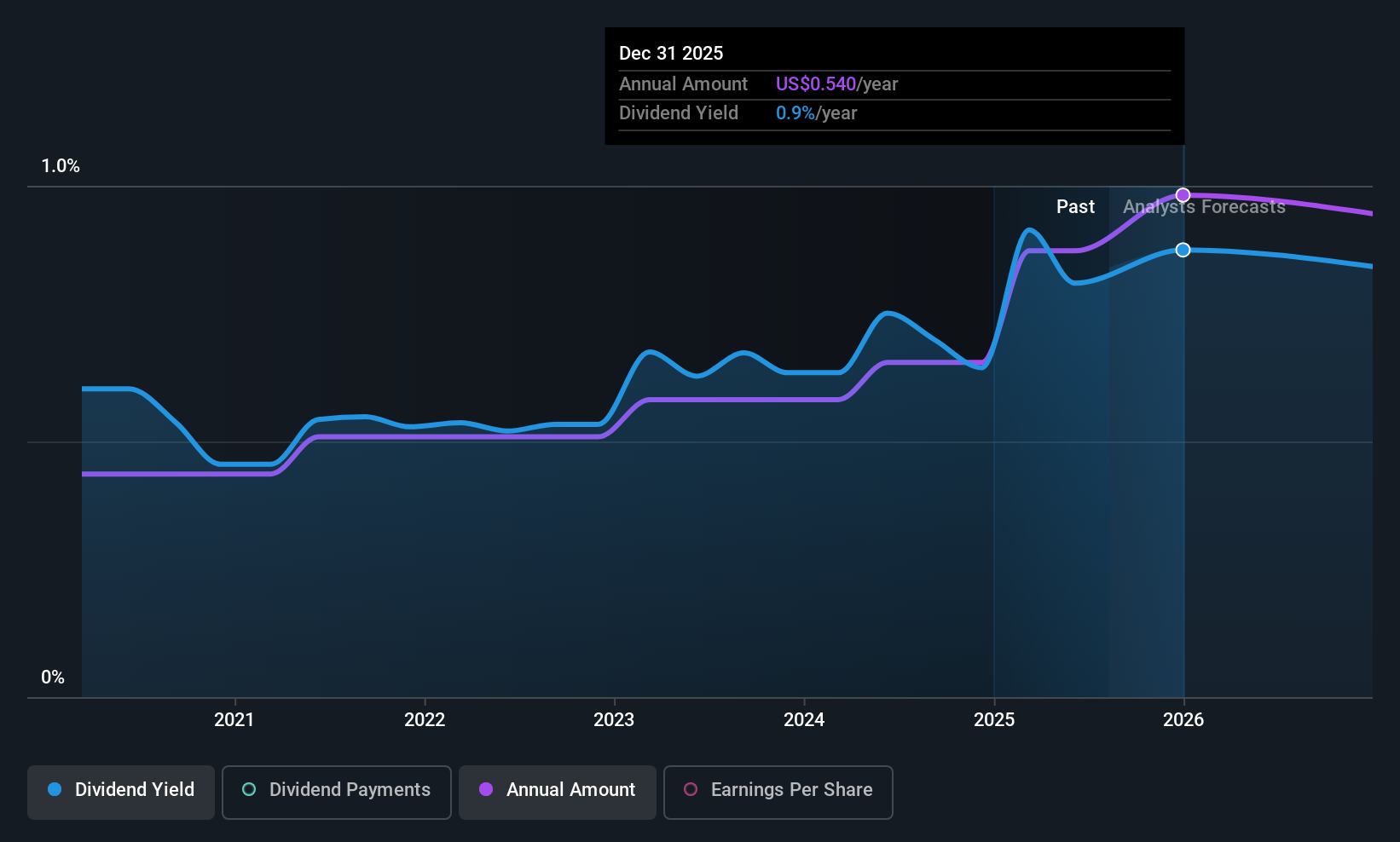- United States
- /
- Banks
- /
- NasdaqGS:RRBI
Red River Bancshares (NASDAQ:RRBI) Is Increasing Its Dividend To $0.15
Red River Bancshares, Inc.'s (NASDAQ:RRBI) dividend will be increasing from last year's payment of the same period to $0.15 on 18th of September. This takes the annual payment to 0.8% of the current stock price, which unfortunately is below what the industry is paying.
Red River Bancshares' Earnings Will Easily Cover The Distributions
Even a low dividend yield can be attractive if it is sustained for years on end.
Having paid out dividends for 5 years, Red River Bancshares has a good history of paying out a part of its earnings to shareholders. While past records don't necessarily translate into future results, the company's payout ratio of 7.4% also shows that Red River Bancshares is able to comfortably pay dividends.
Looking forward, earnings per share is forecast to rise by 6.6% over the next year. If the dividend continues along recent trends, we estimate the future payout ratio will be 8.9%, which is in the range that makes us comfortable with the sustainability of the dividend.

See our latest analysis for Red River Bancshares
Red River Bancshares Doesn't Have A Long Payment History
It is great to see that Red River Bancshares has been paying a stable dividend for a number of years now, however we want to be a bit cautious about whether this will remain true through a full economic cycle. The annual payment during the last 5 years was $0.24 in 2020, and the most recent fiscal year payment was $0.48. This implies that the company grew its distributions at a yearly rate of about 15% over that duration. Red River Bancshares has been growing its dividend quite rapidly, which is exciting. However, the short payment history makes us question whether this performance will persist across a full market cycle.
The Dividend Has Growth Potential
The company's investors will be pleased to have been receiving dividend income for some time. Red River Bancshares has impressed us by growing EPS at 9.2% per year over the past five years. With a decent amount of growth and a low payout ratio, we think this bodes well for Red River Bancshares' prospects of growing its dividend payments in the future.
We Really Like Red River Bancshares' Dividend
In summary, it is always positive to see the dividend being increased, and we are particularly pleased with its overall sustainability. Earnings are easily covering distributions, and the company is generating plenty of cash. Taking this all into consideration, this looks like it could be a good dividend opportunity.
Investors generally tend to favour companies with a consistent, stable dividend policy as opposed to those operating an irregular one. Still, investors need to consider a host of other factors, apart from dividend payments, when analysing a company. Earnings growth generally bodes well for the future value of company dividend payments. See if the 3 Red River Bancshares analysts we track are forecasting continued growth with our free report on analyst estimates for the company. Looking for more high-yielding dividend ideas? Try our collection of strong dividend payers.
New: AI Stock Screener & Alerts
Our new AI Stock Screener scans the market every day to uncover opportunities.
• Dividend Powerhouses (3%+ Yield)
• Undervalued Small Caps with Insider Buying
• High growth Tech and AI Companies
Or build your own from over 50 metrics.
Have feedback on this article? Concerned about the content? Get in touch with us directly. Alternatively, email editorial-team (at) simplywallst.com.
This article by Simply Wall St is general in nature. We provide commentary based on historical data and analyst forecasts only using an unbiased methodology and our articles are not intended to be financial advice. It does not constitute a recommendation to buy or sell any stock, and does not take account of your objectives, or your financial situation. We aim to bring you long-term focused analysis driven by fundamental data. Note that our analysis may not factor in the latest price-sensitive company announcements or qualitative material. Simply Wall St has no position in any stocks mentioned.
About NasdaqGS:RRBI
Red River Bancshares
Operates as a bank holding company for Red River Bank that provides banking products and services to commercial and retail customers in the United States.
Flawless balance sheet with solid track record.
Market Insights
Community Narratives




